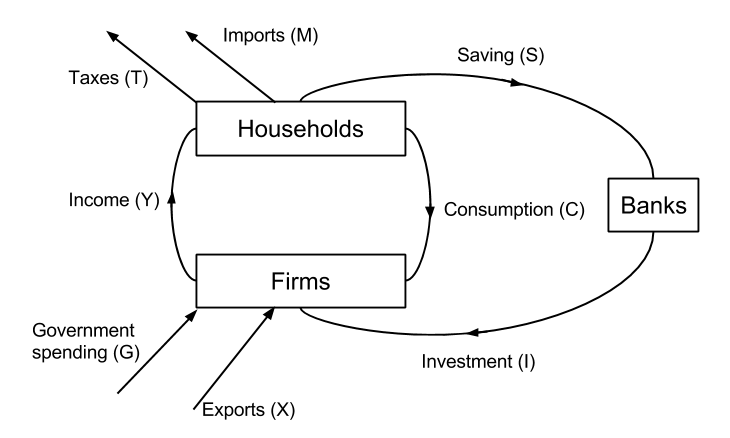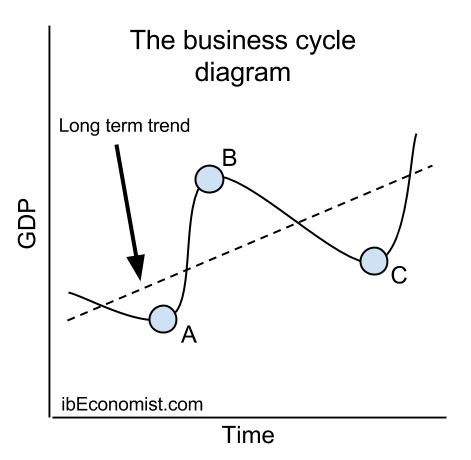The circular flow of income model

Income going into the flow is called injections and income going out of the flow is known as leakages.
Injections = G + I + X
Leakages = T + S + M
Equilibrium of national income is reached when (planned) Injections = (planned) Leakages. The income in the circular flow is always equal to the national income, however this equilibrium does not necessarily mean the economy is at full employment.
The business cycle

The business cycle also known as the trade cycle shows growth of an economy around the long term trend (dashed line) measured by changes in GDP.
4 facts to know about the business cycle:
- Boom/Peak is at point B:
- Rapidly rising inflation
- Shortage of factors of production (most probably labour)
- Rising property values
- Trough is at points A and C:
- High unemployment
- Recovery takes place after troughs right when GDP starts growing again:
- Falling unemployment
- Growing consumption/investment
- Possible rise in inflation
- Growing tax revenue (possibly falling government expenditure on e.g. unemployment benefits)
- Recession occurs when GDP falls for at least two consecutive quarters, hence takes place shortly after booms/peaks (right when GDP begins decreasing):
- Rising unemployment
- Falling consumption and investment
- Increasing government expenditure and shrinking tax revenue
- Possible businesses’ bankruptcies
You must also know the distinction between a decrease in GDP and a decrease in GDP growth. Decrease in GDP means that output of an economy is actually falling. Decrease in GDP growth means that the output of an economy is still growing but at a slower rate.